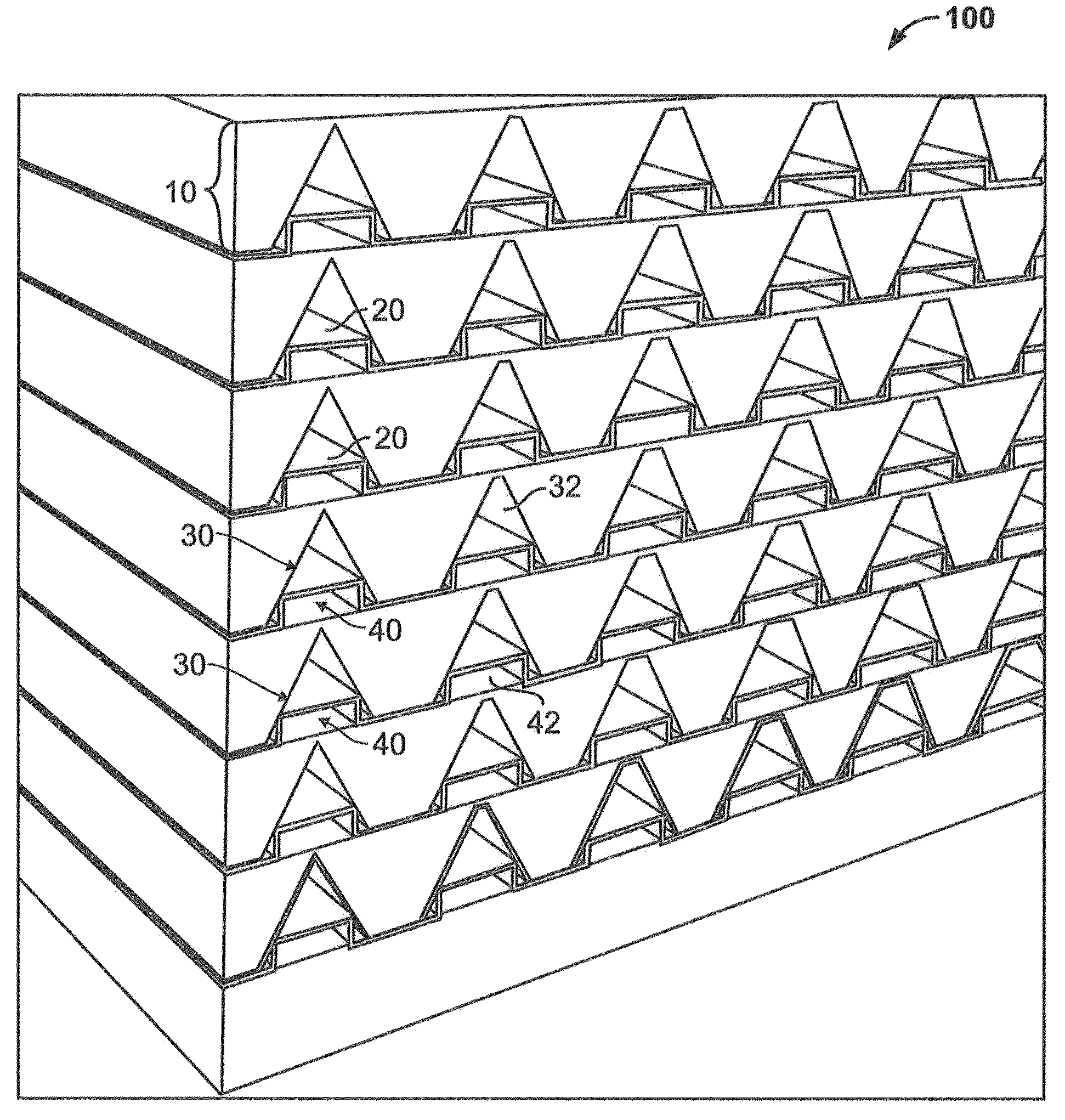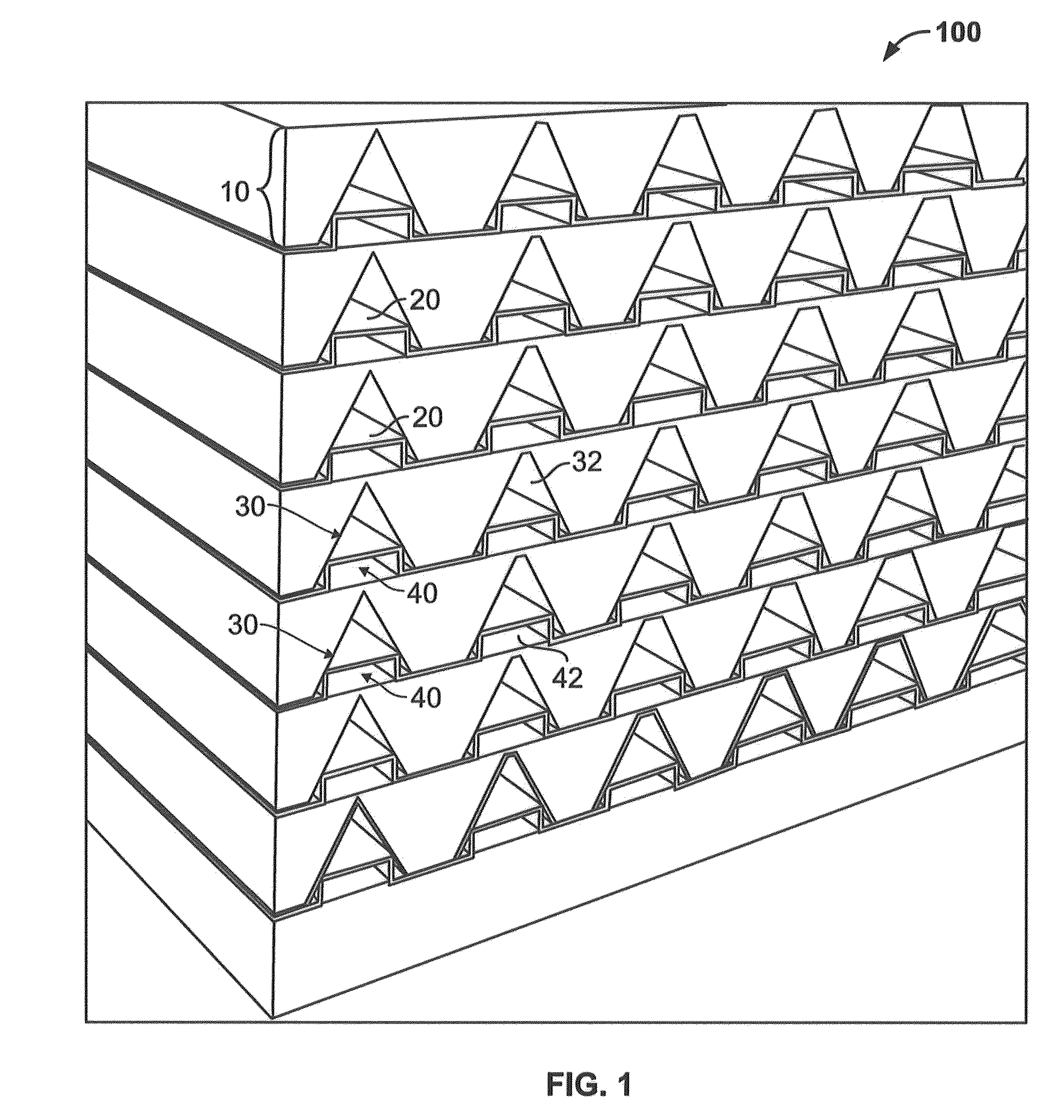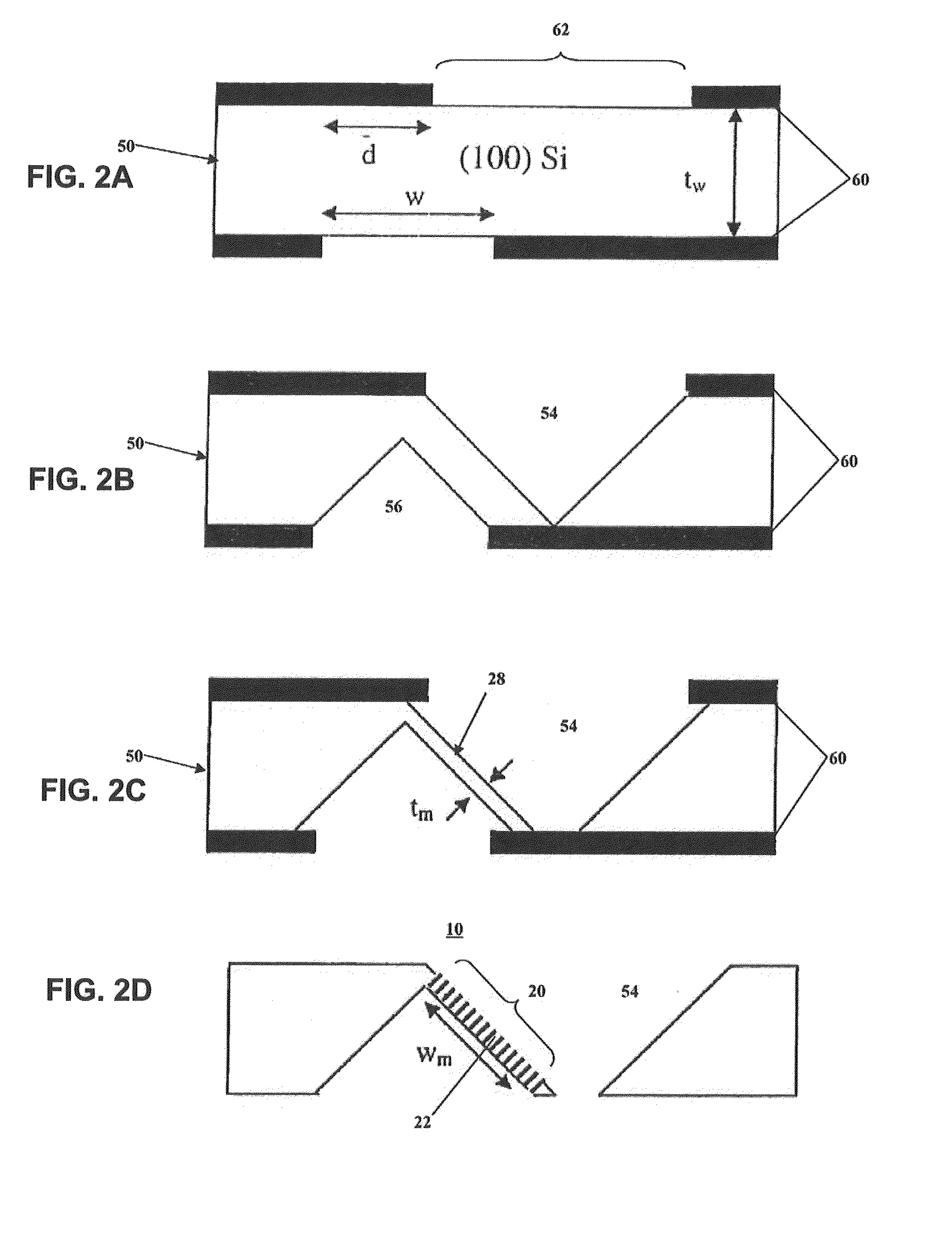Nanoporous membrane exchanger
a membrane exchanger and nanoporous technology, applied in the field of nanoporous membrane exchangers, can solve the problems of inability to match the highly efficient transfer of oxygen and carbon dioxide, inability to control the blood channel dimensions at the scale of pulmonary capillaries, and inefficient gas exchange of so-called membrane oxygenators
- Summary
- Abstract
- Description
- Claims
- Application Information
AI Technical Summary
Benefits of technology
Problems solved by technology
Method used
Image
Examples
examples
[0076]The following examples are put forth so as to provide those of ordinary skill in the art with a complete disclosure and description of how the compositions, compositions, articles, devices, systems, and / or methods claimed herein are made and evaluated, and are intended to be purely exemplary and are not intended to limit the scope of compositions, compositions, articles, devices, systems, and / or methods. Efforts have been made to ensure accuracy with respect to numbers (e.g., amounts, temperature, etc.), but some errors and deviations should be accounted for.
Nanoporous Channel Designs
[0077]The nanoporous membrane exchanger 100 includes several nanoporous channel designs, which include, but are not limited to, a dome channel design 200, a roof-top dome channel design 300, a roof-top channel design 400, and a roof-top channel design 500.
Dome Channel Design
[0078]The dome channel design 200 is shown in FIG. 10A, which comprises a plurality of dome channels 210. The dome channel 21...
PUM
 Login to View More
Login to View More Abstract
Description
Claims
Application Information
 Login to View More
Login to View More - R&D
- Intellectual Property
- Life Sciences
- Materials
- Tech Scout
- Unparalleled Data Quality
- Higher Quality Content
- 60% Fewer Hallucinations
Browse by: Latest US Patents, China's latest patents, Technical Efficacy Thesaurus, Application Domain, Technology Topic, Popular Technical Reports.
© 2025 PatSnap. All rights reserved.Legal|Privacy policy|Modern Slavery Act Transparency Statement|Sitemap|About US| Contact US: help@patsnap.com



